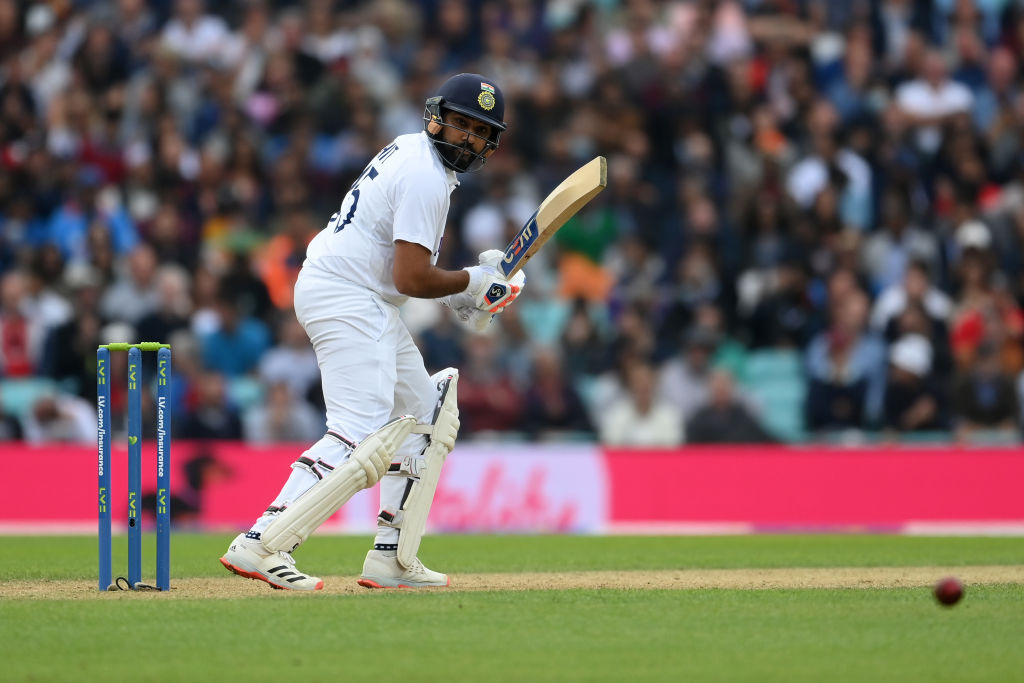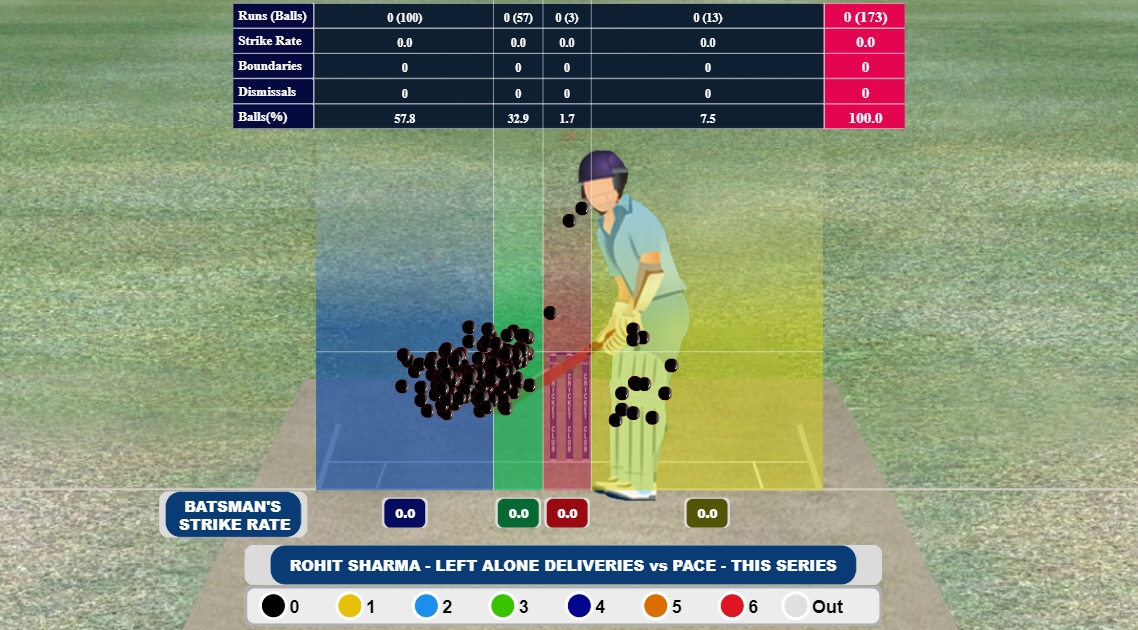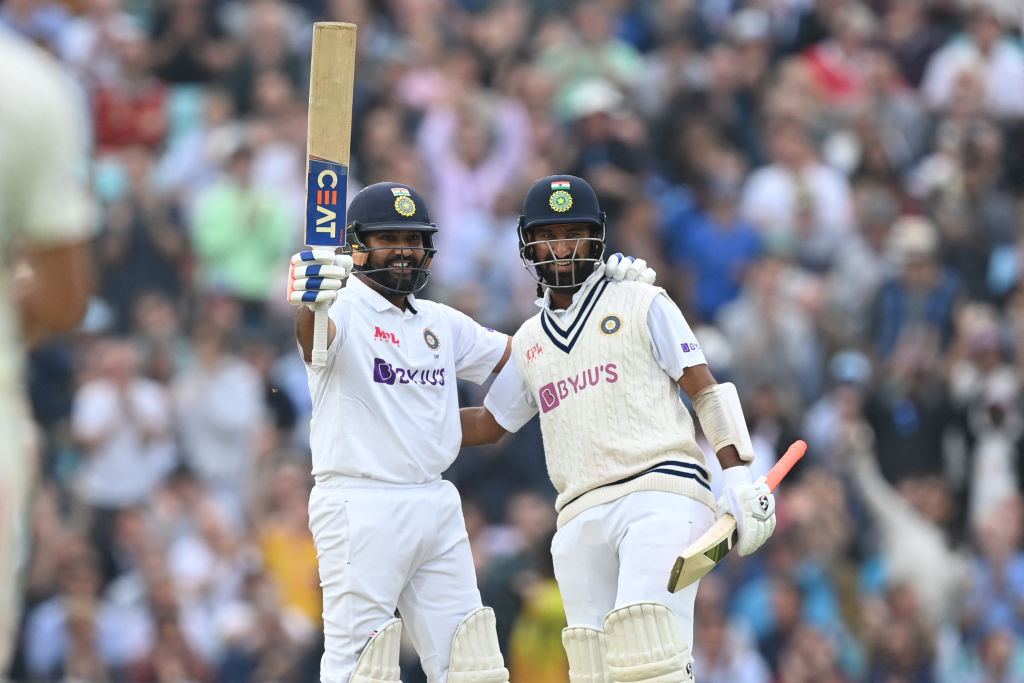 OPINION
OPINION“Talented”
If you jog your memory to the first time you heard of Rohit Sharma, the other person must have associated his name with that adjective. That is because he or she may have heard of Rohit in a similar context, and so on.
For those who are naturally gifted, rewards are expected to come easier. Others envy their innate abilities because they don’t have to work as hard. They are God’s favorite child and the world is their oyster. In a batsman’s case, 'naturally gifted' are those deemed to have an extra second or two to face the ball.
“No batsman has extra seconds to play the ball. It is the same for everyone”, Rohit dismissed such claims in a candid interview with Dinesh Karthik covered by Sky Sports.
Rohit hates being labelled as talented. He has dismissed that tag time and again, be it in an interview with DNA in 2015, a Q&A session on Twitter in 2018 or during the aforementioned conversation with Karthik in 2021.
He, in fact, breaks the myth around the comfort of talented athletes. The silken grace in his straight drive off James Anderson Day 3 at The Oval may approve of the talent he is associated with but things have not come easy to him. After seven years of international cricket, his career represented Schrodinger's cat - it could be both dead or alive - but he built it back through a step-by-step progression. None of it by choice but after being pushed out of his comfort zone.
****
The first step was to open in ODIs. Rohit passed it with flying colors but a revitalized career was concurred with snowballing numbers in white-ball cricket, catalyzed by flat tracks and rules bent in favor of batters. Another label was inevitable - that of a white-ball specialist.
What made the label inexorable was the growing challenges for batsmen in Test cricket. Rohit didn’t do himself any favors either. From his Test debut in 2013 until the end of 2018, he averaged 39.6 across 47 innings in Test cricket. The catch is, his average overseas was only 26.3.
Meanwhile, the Mumbaikar kept re-writing the record books in ODI and T20 cricket. The conundrum was how a batsman this good in white-ball cricket cannot crack the code in the red-ball format.
Luckily for him (or perhaps a fate of destiny?), India continued to struggle to find the right openers. The temptation to try Rohit grew stronger. But there were examples in Alex Hales, Jason Roy and Aaron Finch, none of whom translated their white-ball success into the longest format. 'Which side of the spectrum will Rohit fall?' was the question.
****
It is ironical that one of Rohit’s best ODI hundreds was actually his slowest one. He anchored a tricky run chase of 227 with an unbeaten 122, reaching his ton in 128 balls, in India’s opening game of the 2019 World Cup against South Africa.

“If you look at how the game went and pitch behaved, it was challenging. Hats off to Rohit. In my opinion this is by far his best ODI innings,” said skipper Virat Kohli, who has had the best seat in the house for most of Rohit’s batting heroics, after the game. Rohit scored four more hundreds in that World Cup, wielding his experience to evolve his skillset.
It is tough to deduce when exactly the team management decided to open with Rohit in Tests but the World Cup definitely laid the foundation for it.
****
"When the offer came to me, I was very much aware of it as there were talks within the management about opening the innings at some stage. I knew this was my last chance”, said Rohit after his 127 at The Oval in the fourth Test.
He notched up hundreds in each innings of his first Test as an opener - against South Africa in Vishakhapatnam in 2019. He played 683 deliveries across the three Tests, adding another three-figure score in the third Test - 212. It was at home but the Mumbaikar was thrown testing spells in testing conditions by the duo of Kagiso Rabada and Anrich Nortje. This was Rohit’s second step. The question now was whether he could do the same overseas. Can he make the step up?
****
In England, he has showcased an unprecedented side of his flair built around stoic defence. He has left the ball well. He has played it late. His trademark stroke has been the front foot defence, which he has played 278 times, nearly four times more than any other stroke. That defence has been breached only once. He has dead batted deliveries with such languor that it has sucked the life out of the English seam attack at times. He's defended 55.1% of the 613 deliveries he has faced against pace while leaving another 14.5% in this series.

It has been a masterclass on show. The fact that it has been presented by an individual opening for the first time in one of the toughest countries to open is astonishing. Such a turnaround is possible only with unwavering desire to be a Test cricketer.
“First goal was to play balls, stay on the pitch for as long as possible”, stated Rohit. It is incredible that he has shown his hunger for runs without looking for runs.
He was out playing the pull shot in the first few innings, so he started rolling his wrists on the ball. There is a palpable feeling that Rohit will throw it away at some point himself. Scores of 36, 83 and 59 may suggest that but they are not the same unfulfilled knocks as we have seen from the English camp. Yet on Saturday, Rohit fought those demons of misfortune, ironing out another chink, to clinch that elusive hundred - his first on foreign land.

What summed up arguably the most significant ton of his career was the underwhelming celebration. Rohit did not do the bare minimum of taking his helmet off as to him, playing 100 balls mattered more.
Step by step, from being an underperforming middle-order asset, Rohit has turned into an all-conditions, all-format opener.
“If Rohit Sharma is not a Test match batsman then I have been watching a different Rohit Sharma over the last 5 years”, tweeted Nasser Hussain in 2018. He is now the top ranked Indian batsman in the ICC rankings and the top ranked Test opener in the world.